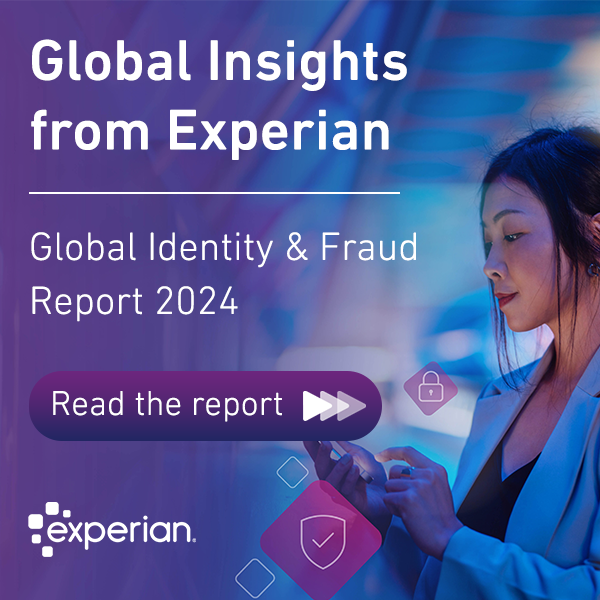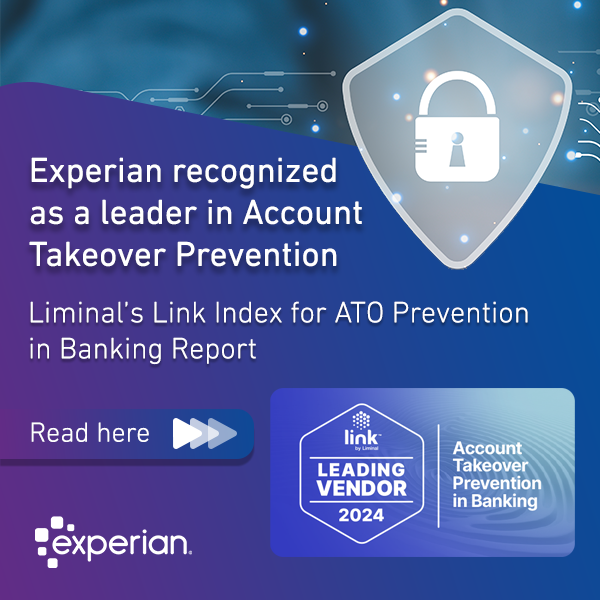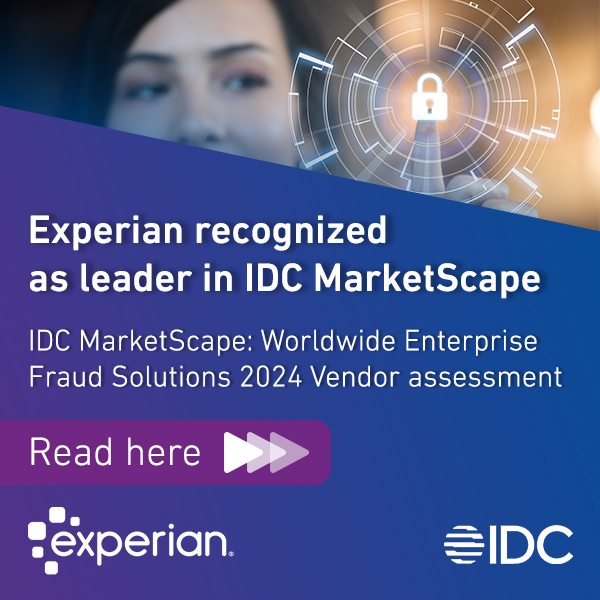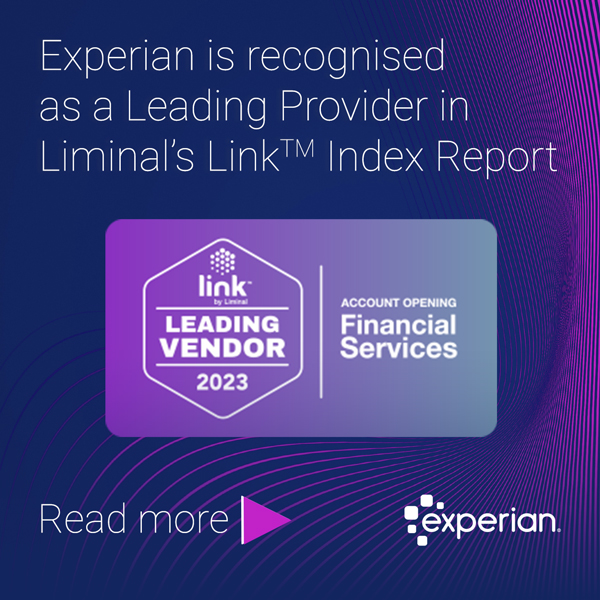Monthly Archives: May 2021

In a recent interview, I had the opportunity to talk to Chris Preimesberger of eWeek about the latest Global Identity and Fraud Report. We discussed some of the business challenges executives face in the increasingly complex space around fraud mitigation while reflecting on how and why the pandemic has shifted the fraud landscape. Market movement – more of us were online than ever before With so many of us at home during the pandemic, access to digital services and the purchasing of goods online increased dramatically. According to our research, businesses responded by investing in supporting services to accommodate the increase in traffic. We saw a lot of action from businesses around how to improve the customer experience while getting a better understanding of who the customers are and how to get their online problems resolved. Our January research wave showed that with all this investment into customer experience and enablement, there were some key areas of investment. Analytics – the use of automation and AI to help make smoother, better decisions for customers – ranked highly in business priorities, but this approach does not exist in isolation. Businesses are also doubling down on support staff to ensure that consumers have a way, if there’s an anomaly in the process, to be able to respond. Whether that’s password resets or call centre staffing, there’s a desire and there’s an intention by businesses to increase staff on digital support. A shifting sense of recognition We also surveyed consumers on their preference for passwords versus other security methods. Security remains the top consideration for consumers when online, above others such as convenience, but interestingly, for the first time in four years password protection did not appear in the top three preferred security methods, favoring instead a more friction-less approach to authentication. This shift in consumer attitudes towards what we call invisible security paves the way for businesses to start to adopt more sophisticated or nuanced approaches to authentication and security. They can start to leverage behavioral analytics or device intelligence recognition without intruding on the user experience. Normalizing biometrics and the importance of a layered approach Customer attitudes around traditional biometrics are very positive – it’s one of the top-rated preferred security methods thanks to the providers that have popularised it through the mobile devices we all use every day. However, the challenge with pure biometrics is always at the point of enrolment – how do you ensure that the right person is assigning their biometric to a device? This is why a layered approach to security that incorporates traditional identity verification or authentication processes along with more advanced technical elements like behavioral analytics, device intelligence, network access, and transactional context is so important. For example, “Is this device associated with David’s account? Is this actually David or a bot? How does David hold his phone?” This includes layers of security that are considered privacy-safe, and may not even require traditional identity data but have anonymous attributes that can be associated with how someone interacts. This will be pivotal in allowing businesses to enable a more comprehensive, pliable, and flexible approach to security rather than relying on rigid but easily broken mechanisms that we’ve been using for a long time. Why the types of fraud will change as the world seeks normality Over the last year, fraudsters focused their energies on stimulus funding and many other forms of low-hanging fruit that they could easily go after, pulling back from their activities in traditional financial services or e-commerce. As the pandemic eases off in many parts of the world, fraudsters are likely to increase their activity in these areas once again as stimulus programs close down, and as consumers increase their spending. Fortunately, we found that more than half of businesses will continue to invest in fraud prevention solutions over the coming year. Fraud trends to watch in 2021 As we look at the direction in which fraud is moving, we know there is an increase in several types of fraud as we navigate what is becoming the post-pandemic world of 2021. Account takeover fraud is set to be on the rise again this year. This is when stolen credentials are used to gain access to systems. Account origination or new account opening fraud will also be on the increase, where fraudsters use stolen identities to create brand new accounts, including a rise in synthetic identity fraud. Card not present online transactions is something we will see in huge volumes given the explosion of online traffic over the last year, which will undoubtedly include an increased volume of fraudulent transactions. Stay in the know with our latest insights:

The pandemic has enabled something close to a digital revolution, but how can businesses keep up with shifting consumer behaviors while ensuring fraud prevention is top of mind? Our latest Global Identity and Fraud Report takes a look at key consumer trends online and how businesses are responding.

In a recent DataTalk interview, I had the chance to reflect on and discuss how we define digital identity these days. The big digital shift we have been immersed in since the coronavirus pandemic started has certainly changed the way we create, relate to, and protect our identities online. One of the most interesting aspects of this change is that the majority of people don't think about how they're being represented online; there's a lot of information that represents us that we don't typically take ownership over. We don't tend to think about that, but it's absolutely vital to the whole process. In this regard, this year’s Global Identity & Fraud Report shows that 8 in 10 businesses now have a customer recognition strategy in place, up 26% since the start of the pandemic. Many companies also developed digital strategies as they strove to improve their online experience and provide security and fraud prevention measures when customers needed it most. That certainly marks an inflection point, as for 55% of consumers globally, security is the most important element of their online experiences. Covid-19 has changed the definition of digital identity The covid-19 pandemic has impacted the way people rely on technology for their day-to-day interactions, from shopping to banking to digital identification. It’s particularly interesting seeing how for people that weren't really engaged online before, that weren't big believers in the whole idea of buying goods and services online, the risk of walking into a store during the pandemic outweighed their fears of shopping online. That translated into about 20% of the population moving their shopping online in the last twelve months, per Experian’s 2021 Global Identity & Fraud Report. Looking ahead, the expectation is that 46% of consumers worldwide purchase and do more things online, even when physical stores and venues are safe to go back in again, meaning that people’s digital footprint is growing faster than ever. In this context, we could define digital identity as how we represent ourselves in a digital environment and how do people recognize us. For example, in the same way that years ago a good way to identify someone was looking up that person’s address and phone number, as landlines become a thing of the past, it’s possible to validate someone’s identity online using data gathered from mobile phones. The majority of people wouldn’t share those with anyone else, so their mobile phone becomes a really strong representation of their identity in the digital world. Today, opening our mobile phones with our thumbprint or via facial recognition feels very normal (that’s already part of our digital identity). Something similar happens with voice biometrics, IP addresses and device information, sources for identity data that are gaining prevalence in the digital-first world. All this identity data that is generated in the background starts to add up and creates uniqueness, helping people get recognized digitally. Related Content The race to Digital Identification, a DataTalk with Eric Haller What is digital identity and why should we care What are consumers the most concerned about when it comes to digital iterations

As part of our Women Making Waves in Technology special podcast series, I had the chance to talk to Jayme Beck, Vice President of Global Marketing & Customer Experience at Experian Decision Analytics about how innovation translates into tech marketing and customer experience. In this 20-minute conversation, Jayme shares her passion for connecting with people and reminds us of the importance of looking for that human element, as behind every screen, behind every algorithm, decision, email, there is a person. Innovation comes in all sizes, also in marketing This podcast also explores topics such as managing innovation from a marketing standpoint, especially nowadays that everyone is talking about omni-channel experiences. In this day and age, it’s all about embracing a growth mindset and bearing in mind that innovation comes in all sizes. The pandemic has resurfaced the importance of communication, and while communications practice and discipline isn’t something that comes naturally to everybody, this is a great time for communications and marketing professionals to grip their place in the innovation cycle. For Jayme, this starts with letting go of the idea of perfection and overthinking. Adopting a ‘try & learn’ mindset is the next step. “I like to revisit a talk from this baseball coach I know, where he encourages everyone to let go of the idea of perfect and put one foot in front of the other, and see where that takes us to.” Discover other stories from the Women Making Waves in Tech podcast series Access all episodes of Insights in Action on Soundcloud, Spotify, Google Podcasts

Digital interactions have been the norm for some time, and have recently accelerated due to the pandemic, surfacing digital identity as a fundamental focal point for businesses. A shift from analog identity to digital is happening organically due to digital demand, but the necessity of safeguards from businesses and policymakers, and an understanding of what it means to have a digital identity from consumers, make this a complex and increasingly important topic. "Sometimes it's easier to think about analog and how that might relate to digital. Our analog life, our identity, is pretty straightforward. We're all used to showing a driver's license, an identity card, or a passport. It's been authenticated by somebody that we trust like the government. It's something that we use as an entry point to open up our first checking account at the bank or when we go to the doctor's office and we provide insurance and our identity. In the digital world, it's very similar. If you think about that provenance or that trusted source of identity, it often starts with some things that we don't even see. That digital footprint is growing and expanding into a lot of pieces of information that most of us aren't familiar with or think about. That data becomes the gateway to how we access goods and services in a digital environment." Eric Haller In this CXO Talk, Michael Krigsman asks Eric Haller, Executive Vice President and Group Head of Experian DataLabs, what it means to have a digital identity and why it's important. They take a look at the following topics: What is digital identity? How do you establish digital identity? How to improve digital identity? How can we protect against AI-generated deep fakes? What is the intersection of digital identity and GPT-3? Blockchain and digital identity Societal implications of digital identity Advice to businesses and policymakers on digital identity

There's been lots of discussion about what a return to normal will look like as we transition out of the global pandemic—and much remains up the air. However, our recent consumer and business surveys paint a picture that merits the attention of financial service and credit companies. The big takeaway: The Covid-19 crisis has bifurcated consumers, created extremes on both sides. On the one hand, many individuals coming out of the pandemic have more cash than they had going in. The crisis didn't impact their income, and instead, they've spent the year spending less than they usually would due to work-from-home mandates and local lock-downs. Our consumer survey from January 2021 shows that financial challenges have eased for younger consumers and higher-income households. Yet, at the same time, there's also a contingent of consumers who continue to struggle. One in three of our survey respondents reported that they still have financial concerns and a similar percentage are worried about their employment. We anticipate that the demand for support, service, and credit will be high from each side. So how can companies respond to the heightened need for credit products while continuing to service consumers who may need support? This is where digital solutions make all the difference. By employing digital onboarding and decision automation tools, you can rapidly increase your capabilities while also improving the online customer experience for all. A return to spending The U.K. provides a glimpse of what a staggered return to normalcy may look like. When shops and restaurants re-opened for business in mid-April, lines of people streamed out the doors and flooded the streets. With the country's re-opening culminating in June, many consumers will be looking to resume spending on items and projects that they've neglected since the pandemic's start. For example, our survey data reveals that consumers are becoming less cautious with their finances in general. Fewer people report that they're cutting back on discretionary spending and there's a decline in consumers putting money toward emergency funds and drawing funds from savings accounts. These consumers may be gearing up to spend more. And companies that can anticipate their needs and meet them proactively will be positioned to win and keep their business. Solutions for pent-up demand Many businesses are already preparing for this new wave of demand. Consider that eight out of 10 businesses report that they're turning to cloud-based decisioning applications to improve the customer journey. In doing so, companies are giving themselves much-needed flexibility right when it's needed most. They can dial up their online capabilities based on demand and then dial down if it drops. At the same time, these automated solutions enable companies to deploy their staff to customers who do require personal attention. It's a divide-and-conquer model that keeps the customer at the center. In addition to utilizing the cloud, more than 40% of companies say they leverage AI to improve the customer experience. The AI component enables companies to provide personalized options for consumers and create customer journeys that are far more relevant. The timing for such personalization couldn't be better. In our research, a growing percentage of consumers indicate they're willing to share more personal data about themselves in exchange for improved experiences and added value. Building solutions that work—for everyone The pending volume creates a significant growth opportunity and highlights why digital solutions are a must. Companies that provide the best digital service to customers will garner their trust, loyalty, and even referrals. This yields more demand, increasing the need for scalable, cloud-based onboarding and decisioning even more. Amid this activity, you'll want to focus on getting the most from your digital tools. To do so, consider: Leveraging data for improved credit outcomes Evaluate your end-to-end customer journey, looking for ways to utilize data and increase personalization at every juncture. You'll improve the customer experience and provide more relevant offers. The right data also provides a holistic picture of customer credit risk and ensures you're not creating problems for the future. Utilizing low-code solutions so employees can dive in Digital onboarding and decision automation can be game-changing for the customer experience. But if it's hard for employees to use, then that effectiveness takes a hit. Look for solutions that your employees can use off the shelf. The ability to generate customizable reports and execute on ideas and strategies without involving IT at every turn is essential. Recognizing limitations and potential bias Evaluate your analytics models and look for areas of limitation or potential bias. You want to ensure that you're providing access to credit to all eligible customers and not inadvertently excluding specific demographics. Building capabilities that put you ahead of the market The pandemic provided many lessons—and the value of anticipating demand or potential problems was one of the most important. The crisis is waning, but the financial consequences will continue to reverberate, especially as various government aid programs come to an end. Focus on improving your analytics so that they can better describe what's happening now and predict pending changes in demand and shifts in your portfolio. By and large, consumers are moving forward after a challenging year. Prioritize your digital solutions to make sure you can meet their needs regardless of what the future holds. Stay in the know with our latest insights:

Did you miss these April business headlines? We’ve compiled the top global news stories that you need to stay in-the-know on the latest hot topics and insights from our experts. Consumers prefer 'invisible security' to passwords Using Experian's latest research, Venture Beat looks at the top three physical and behavioral 'invisible security' methods and why consumers no longer prefer visible online security such as passwords. Experian’s identity GM addresses industry’s post-Covid challenges How are CIOs and IT leaders dealing with new challenges created by the move of so much commerce from in-person to online? Information Week explores why security and identity verification are key priorities right now. Will passwords finally be a thing of the past? Consumers are more concerned about online privacy and identity theft than they were before the pandemic. CNP covers why warnings from data and fraud experts about the security of passwords have finally caught the attention of consumers. The future of secure data Eric Haller, Vice President & General Manager of Identity, Fraud & DataLabs, joins Bloomberg's Scarlet Fu to discuss the waning age of password protection and what the future of account security will look like. Consumers recognize biometrics security tops passwords, Experian says Biometric Update explores why physical biometrics like facial recognition and fingerprints are the preferred method of authentication when it comes to consumers according to Experian's latest research. Stay in the know with our latest insights:




